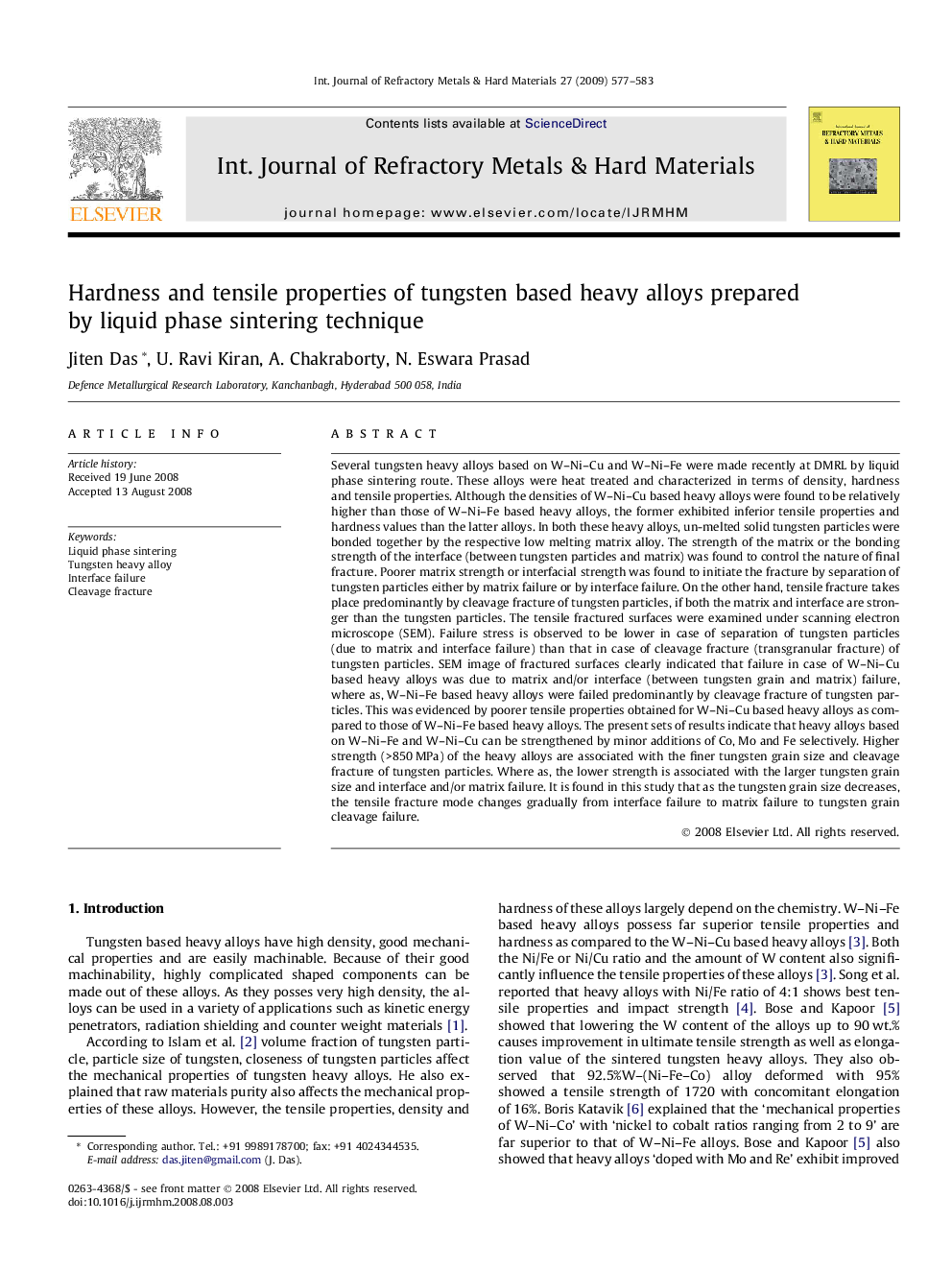| کد مقاله | کد نشریه | سال انتشار | مقاله انگلیسی | نسخه تمام متن |
|---|---|---|---|---|
| 1604236 | 1516006 | 2009 | 7 صفحه PDF | دانلود رایگان |

Several tungsten heavy alloys based on W–Ni–Cu and W–Ni–Fe were made recently at DMRL by liquid phase sintering route. These alloys were heat treated and characterized in terms of density, hardness and tensile properties. Although the densities of W–Ni–Cu based heavy alloys were found to be relatively higher than those of W–Ni–Fe based heavy alloys, the former exhibited inferior tensile properties and hardness values than the latter alloys. In both these heavy alloys, un-melted solid tungsten particles were bonded together by the respective low melting matrix alloy. The strength of the matrix or the bonding strength of the interface (between tungsten particles and matrix) was found to control the nature of final fracture. Poorer matrix strength or interfacial strength was found to initiate the fracture by separation of tungsten particles either by matrix failure or by interface failure. On the other hand, tensile fracture takes place predominantly by cleavage fracture of tungsten particles, if both the matrix and interface are stronger than the tungsten particles. The tensile fractured surfaces were examined under scanning electron microscope (SEM). Failure stress is observed to be lower in case of separation of tungsten particles (due to matrix and interface failure) than that in case of cleavage fracture (transgranular fracture) of tungsten particles. SEM image of fractured surfaces clearly indicated that failure in case of W–Ni–Cu based heavy alloys was due to matrix and/or interface (between tungsten grain and matrix) failure, where as, W–Ni–Fe based heavy alloys were failed predominantly by cleavage fracture of tungsten particles. This was evidenced by poorer tensile properties obtained for W–Ni–Cu based heavy alloys as compared to those of W–Ni–Fe based heavy alloys. The present sets of results indicate that heavy alloys based on W–Ni–Fe and W–Ni–Cu can be strengthened by minor additions of Co, Mo and Fe selectively. Higher strength (>850 MPa) of the heavy alloys are associated with the finer tungsten grain size and cleavage fracture of tungsten particles. Where as, the lower strength is associated with the larger tungsten grain size and interface and/or matrix failure. It is found in this study that as the tungsten grain size decreases, the tensile fracture mode changes gradually from interface failure to matrix failure to tungsten grain cleavage failure.
Journal: International Journal of Refractory Metals and Hard Materials - Volume 27, Issue 3, May 2009, Pages 577–583